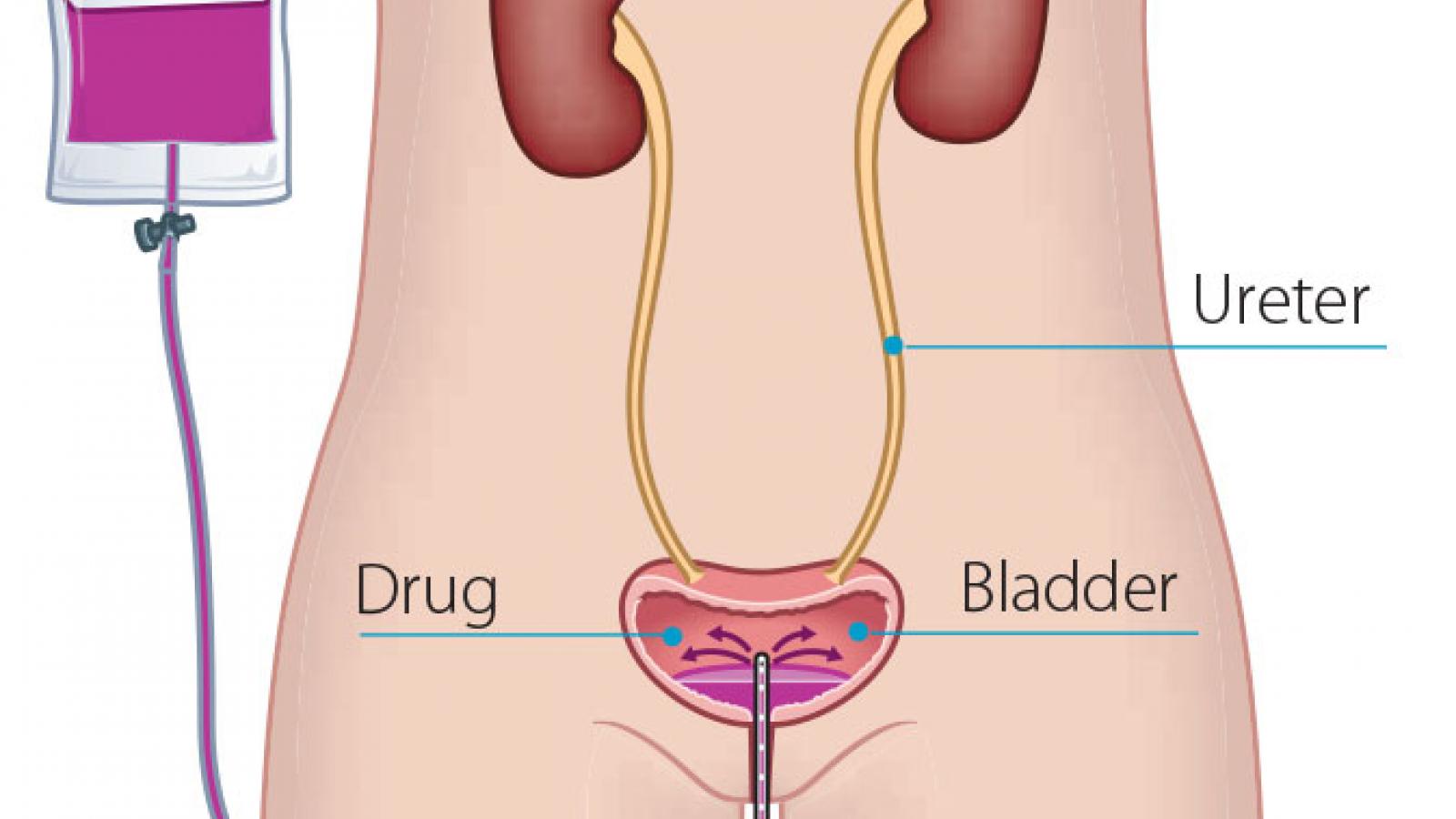Drug treatment after TURBT surgery for non-muscle invasive cancer

Chemotherapy into the bladder (intravesical chemotherapy)
Your doctor may decide to give you chemotherapy drugs into your bladder. The drugs aim to kill any cancer cells on the lining of your bladder to reduce the risk of the cancer coming back. You might have this treatment on the day you have the surgery or in the hospital’s outpatient department after you have been discharged.
Liquid chemotherapy drugs are given into a tube called a catheter, which is put into your bladder. You have to try not to pass any urine for the next 2 hours. This gives the chemotherapy time to be in contact with the lining of the bladder. You then pass urine naturally to get rid of the drug. Or your nurse may drain the chemotherapy out through a catheter. After treatment, the doctor or nurse will remove the catheter tube.
You may have a single treatment or a course of treatments, depending on the stage and grade of your cancer.
If your doctor feels you have a low risk of the cancer coming back, you may not need any more than one treatment. If they feel you have a greater risk, they may recommend you have more intravesical
chemotherapy. This is usually given once a week for 6 consecutive weeks.
Hardly any of the drug is absorbed into the bloodstream, so it rarely affects any other part of your body.
Immunotherapy into the bladder (intravesical immunotherapy)
Immunotherapy helps your immune system to work better to fight cancer cells. BCG treatment is an intravesical (directly into your bladder) immunotherapy.
BCG can help to stop bladder cancers coming back or spreading deeper into the bladder. When BCG is in the bladder, it goes to the cancer cells. This, in effect, turns on the immune system, and the immune system will then attack the bladder cancer cells.
This treatment only works for cancer cells that are in the lining of your bladder (superficial). It does not work for cancer that has spread to your bladder wall. BCG is usually used for carcinoma in situ and higher grade bladder tumours.
As with chemotherapy, the drug is given as a liquid, which is passed into the bladder through a catheter tube placed in your urethra. Once you have the treatment in your bladder you must try not to pass urine for 2 hours. The treatment is usually given once a week for 6 weeks.
Sometimes the above drug treatments are repeated and given regularly. This is known as maintenance therapy. It is usually used to try to stop high-grade tumours and CIS from coming back.
For more information
Phone
1800 200 700


